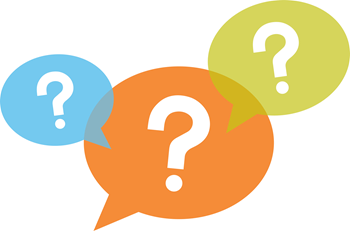Contact a knowledgeable Waterstone Mortgage loan originator near you, and get started on the path to homeownership. We'll be with you from application to clear-to-close, and every step in between.
First-Time Homebuyers
So you're thinking about taking the leap into homeownership. Congratulations! This is a big step filled with lots of excitement and jitters. If you’re like the vast majority of homebuyers, you will need a loan to purchase your home. This loan could cover the full price of the home, or it could be the price minus the amount you provide for a down payment.
Good news: we’re here to help you every step of the way. In fact, we consider ourselves to be first-time homebuyer experts. A majority of our clients are purchasing a home for the first time, so we have the tools and resources in place to teach you about the process and help you feel confident in this major investment you’re making.

The first step in the homebuying process is to contact a loan originator in your area and get get pre-approved. Many buyers start by shopping around for a home, but it's best to have a pre-approval letter in hand before you begin the home search process.
To get pre-approved, your loan originator will have you complete a loan application and do a limited review of your finances – things like your income, assets, etc. The results of this review will let you know what loan amount you’re pre-approved for. That amount, in conjunction with whatever amount you have for a down payment, will determine your official budget for a new house. Use our Mortgage Payment Calculator to estimate a comfortable monthly mortgage payment.
To ensure that you have the strongest pre-approval possible, we recommend getting a Platinum Credit Approval (PCA). Especially as a first-time homebuyer, it’s important to make yourself stand out from other buyers in a competitive market. Receiving your PCA before starting your home search will help you shop with confidence and make a compelling offer.
Providing a down payment might be the best option for some homebuyers, but it might make more sense not to put any money down for others.
With that said, not all loan programs require a down payment. Some do, some don’t. Some require a low down payment (think 5% or less). Some even fund 100% of the home’s cost, and others allow you to finance closing costs.
With Waterstone Mortgage, you have options.
Benefits of a Down Payment
 Lower monthly payments
Lower monthly payments
The more money you put down, the smaller your loan amount will be. In most cases, this means a lower monthly payment.
 Eliminate PMI
Eliminate PMI
If you have a conventional loan and put 20% down, you won’t have to pay private mortgage insurance (PMI).
Benefits of No Down Payment
 Purchase your dream home sooner
Purchase your dream home sooner
Saving for a down payment takes time. If you don’t have as large of an amount to save for, you may be able to purchase your new home sooner.
 Keep more money in your pocket
Keep more money in your pocket
If you choose not to put any money down on your home, that means you can keep more funds on reserve. This can be particularly beneficial to help first-time homebuyers ease into new expenses they might not have had when renting!
If you’re thinking about buying a house, you’ve probably seen or heard of some of the main types of loan programs, like conventional vs. government. Let’s demystify some of the basics.
Conventional Loans
These are your standard home loans, not backed by the government. There are many types of conventional loans with down payment requirements ranging from 0%-20% or more.
Government Loans
These loans are insured by the government, which means they often have lower credit score or down payment requirements. FHA, USDA, and VA loans are examples of government loans.
Find Your Loan
While the best way to figure out which loan type is the best fit for you is contacting a loan originator in your area, we’ve created a handy tool to help get you started. Visit our Loan Decision Tool to answer a few quick questions and get information on loan programs that match your needs!
Once your offer has been accepted and you've submitted your mortgage application, the last thing you want to do is wait an unnecessarily long period of time to move into your new home. We’ve created a tool that maps it all out for you, showing exactly what needs to happen between application and closing for you to hit your projected closing date.
Simply enter your home loan application date and desired closing date into the Close on Time Calendar, and it will automatically fill in all the important loan milestones (along with their anticipated dates). It’s an easy and useful way to get started in the home loan process.
Originator (LO)
Contact Realtor, shop for a
house, and extend an offer to
purchase on your dream home
accepted to finalize your loan application
appraisal, and flood certification
updates on your appraisal
and work to approve loan for closing
(additional items may be requested)
Preview e-sign documents and
electronically sign them up to three
days prior to the closing date
At closing, you will finalize remaining
documentation and receive your keys


